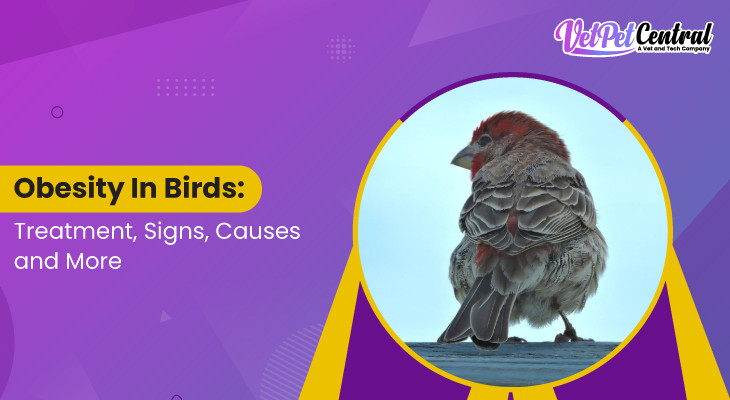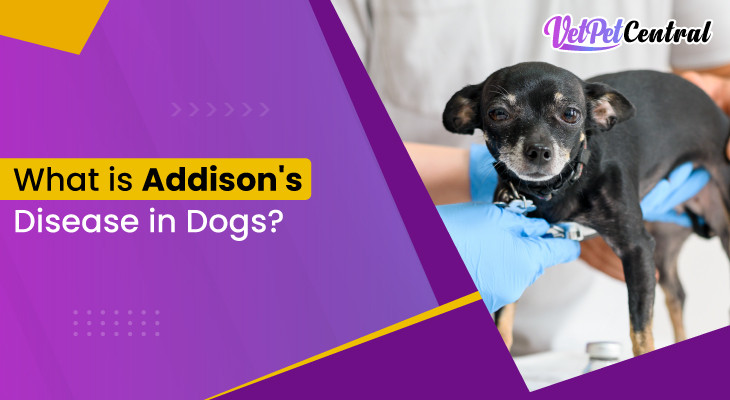Obesity In Birds - Treatment, Signs, Causes and More
 Jan 31, 2025
Jan 31, 2025

Obesity is one of the common problems in caged birds. As pet parents often cut the bird’s feathers to limit flying activities, these species significantly bulk up, leading to serious health concerns.
Obesity is typically encountered in older pets and those feeding on seeds.
In order to ensure the optimal weight of your caged birds, it’s important to have a thorough understanding of obesity.
Below, we’ve discussed everything about obesity in birds, including its causes and treatment options.
Moreover, you’ll discover a detailed table highlighting the normal and obese weights of 10+ popular birds.
So, let’s dive in!
What is Obesity in Birds?
Veterinarians define obesity in dogs and cats when their weight is 15% greater than their ideal weight. This sets a clear guideline and scale for understanding obesity in birds as well.
We can say that a bird is obese when its weight exceeds the ideal body weight by 15%. Obesity is referred to as a chronic condition in which the bird gains excessive fat and weight.
Signs of Obesity in Birds
You can identify various signs of obesity in your pet bird.
Here it is.
- Birds with obesity often stand with their legs wide apart.
- Fat accumulation is visible beneath the skin, particularly in non-feathered areas, such as:
- The side of the neck at the base of the jaw.
- When parting the feathers:
- Difficulty seeing the jugular vein can indicate obesity.
- The skin may appear yellowish.
Causes of Obesity in Birds
Pet birds become obese when they eat a high-fat diet (such as seeds) and perform little to no physical exercise. This leads to more calorie consumption than they burn off through activities.
Compared to cage birds, wild birds move and burn calories frequently during activities like flying, playing, etc.
However, pet birds fail to burn the ideal amount of calories.
Also read causes of obesity in cats.
Overview of Obesity in Different Types of Birds
All the birds are unique and tend to have different bodies.
Some breeds, like Quaker parrots, macaws, and Amazon parrots, are more prone to obesity.
Below is an overview of obesity in the most popular birds:
Bird Obesity Table:



Health Issues for Obese Birds
Obesity in pets can lead to serious health problems, including the following:
- Cancer: Fatty tumors such as xanthomas are more likely to occur in pet birds.
- Respiratory Issues: Excess fat can put pressure on airways and lungs. This can also decrease the lungs’ volume. In this case, the lungs fail to inflate properly during coughing or other breathing procedures.
- Hepatic Lipidosis: Also referred to as fatty liver disease, it occurs when fat cells replace the healthy cells in the liver.
- Arthritis: Inflammation of connective tissues and cartilage anywhere in the body is called arthritis. It affects the joints and movement of the pet's body.
Other health issues, such as heart disease, sleep apnea, and high cholesterol, are also common in pet birds.
Treatment for Obesity in Birds
Under the supervision of a licensed veterinarian, obesity can be treated with a combination of exercising schedule and a dietary plan.
Replace the seed diet with a healthy diet with essential fatty acids, vitamins, and proteins. Offering a small amount of fresh fruits and vegetables is also a good method to increase fiber.
Avoid food packed with carbohydrates like white bread, rice, etc.
In addition, encourage your birds to exercise daily.
Provide them with:
- Playful cages with spiral rope porches
- Multiple feeding bowls
- Outdoor terraces
You can also allow your pet to walk and fly out of the cage.
It’s important to consult a veterinarian for a personalized diet and exercise plan.
The veterinarian will provide you with a highly effective plan tailored to your bird's unique needs.
To Conclude
All in all, obesity in birds can be caused by limiting their physical activities and increasing their fat-based diet.
Such birds tend to have bulkier bodies than their wild counterparts.
Remember, obesity can lead to serious health issues, including joint, heart, and lung problems.
Hence, if you notice any signs of obesity, immediately consult a veterinarian or vet clinic.
Explore VetPet Central to get online consultations from anywhere!
We connect highly experienced vets with pet parents worldwide.
Get an appointment today!
FAQs
Why is my pet bird obese?
If your pet is weighing 15% greater than its ideal weight, you might be feeding them with a high-fat seed diet. Limited exercise can also be the reason for your pet’s obesity.
What does an obese bird look like?
An obese bird looks bulkier than a normal one. Their stance might be wider than usual. You might also notice fat moving underneath their bodies or a fatty cleavage right beneath their neck.
Can Obese birds fly?
Yes, they can fly, but may not be able to survive in the wild. Overeating can make birds too heavy or slow to fly properly.




